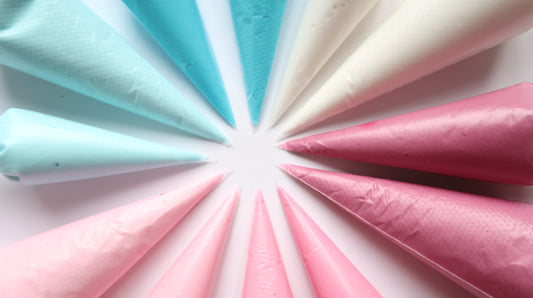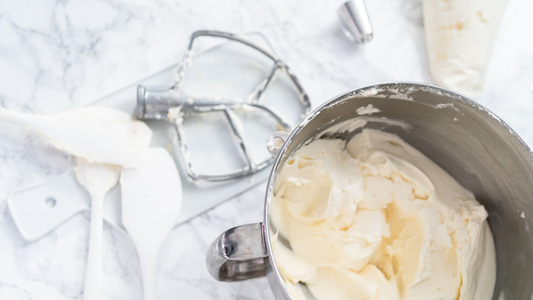The sugary-sweet baking trend
Numerous sweet baked goods have evolved into true works of art in recent years. One common feature of many cakes and sculpted figures is fondant. This guide will show you what this sweet substance consists of and what types of fondant are available.
What is fondant ?
Fondant is the name of a paste whose main ingredient is sugar. The name, which originates from French, translates to "melting" or "melting," thus providing an initial clue to the workability and consistency of the sugar paste. In German-speaking regions, the term fondant has also become established because names like sugar paste or sugarpaste are often associated with hair removal products.
Now that this question has been answered, we can move directly to the different types of sugar mass.
Liquid fondant / Melting fondant / Icing
The best way to distinguish between the different types of fondant is by their consistency. First up is liquid fondant. Other common names are melting fondant or icing. This type has the highest liquid content. 90% of this sweet mixture consists of sugar, while the rest is water or glucose syrup. If you enjoy experimenting with your baking, you can add colorings or flavorings to better match the liquid fondant to your specific baked goods. The consistency should allow you to either completely cover the baked goods or just coat one side. For better adhesion, sprinkle additional decorations like sugar pearls over the still-moist melting fondant.
Roll fondant / sugar paste / sugar paste
Fondant is the most well-known type of fondant, which can be rolled out to cover cakes. You might be familiar with this principle from marzipan coverings. While liquid fondant often has a slight sheen, rolled fondant tends to have a matte surface. To achieve the desired consistency, the sugar paste is kneaded and rolled out several times until the fondant no longer feels sticky after rolling. The smooth covering allows you to decorate wedding cakes and themed cakes exactly as you wish. Gelatin is usually used as a binding agent to maintain the desired firmness. If you are vegetarian or vegan, you should either make the fondant yourself or carefully study the list of ingredients.
Rolled fondant is also used to work with our embossers/debossers.Flower paste / gum paste
At first glance, flower paste and rolled fondant have many similarities. The composition of flower paste, also known as gumpaste, allows it to be rolled out very thinly without cracking. This makes it possible to create flowers or leaves that are just as delicate as the real thing. If you perfect this art, many people will have to look twice to distinguish between fondant and real flowers. Because of its thinness, flower paste dries quickly, so you should always make decorations shortly before the event.
Which of your favorite flowers would you like to recreate using flower paste?Modeling fondant
In the past, cake decorations were made from either chocolate or marzipan. Neither of these is ideal for creating elaborate designs. This is where modeling fondant comes in. This sugar paste has a firmer consistency than rolled fondant. Nevertheless, your hands and a little dexterity are all you need to shape fondant into figures, fantastical creatures, or even motifs inspired by nature. The secret to its malleability lies in carboxymethylcellulose, or CMC for short. This ingredient is also found in denture adhesive, among other things. However, CMC is safe for human consumption, so you don't have to worry if your guests sample your imaginative creations.
Dear friends, we hope we were able to give you a better understanding of the topic of fondant .



